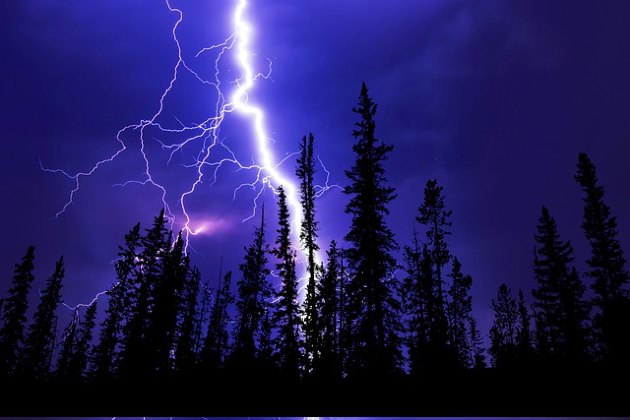🌩️ 27 Mind-Blowing Facts about Lightning (updated)
written by Stanley Udegbunam || Dec 28, 2020

Lightning is the visible electrical discharge in the atmosphere that occurs when region of clouds acquires excess electrical charge strong enough to break through the air resistance.
In today’s article, we will be looking at mind-blowing facts about lightning that are really worth knowing.
Without further ado, let’s get started.
AFRILCATE
27 Lightning Facts
- The greatest concentration of lightning strikes is in central Africa and south Americans.
- The irrational fear of lightning is known as keraunophobia.
- The study of lightning is called fulminology.
- Lightning once took down a $78 million Atlas-Centaur 67 rocket in March 1987.
- Worldwide estimates that lightning occurs 50-100 times a second.
- A single bolt of lightning is around 50,000F, approximately 5 times hotter than the surface of the sun.
- The odds of being struck in your lifetime is 1 in every 3,000.
- Lightning kills about 2,000 people a year.
- In the US, lightening occurs most often in Florida. Its hot, moist climate is perfect for creating thunder cloud, which produces lightening.
- In Venezuela, there’s something called “Catatumbo” lightning, where there’s almost constant lightning strikes, averaging over 100 strikes per hour.
- Lightning can carry over 100 million volts of electricity.
- Lightning is not confined to thunderstorms. It’s been seen in volcanic eruptions, extremely intense forest fires, surface nuclear detonations, heavy snowstorms, and in large hurricanes.
- You can deduce the distance of the storm by counting the time difference between the lightning and the thunder (5 seconds = 1 mile away).
- Park ranger Roy Sullivan holds the Guinness Record for surviving seven lightning strike
- The rapid expansion of heated air causes the thunder.
- During electrical storms, people are advised to seek shelter inside the building and if caught in the open avoid high ground and isolated trees.
- Positive lightning is particularly dangerous, because they travel long distance up to 25 miles and sneak on people who don’t even know about the thunderstorm miles away.
- If you can hear thunder, you are within 10 miles (16 kilometers) of a storm and can be struck by lightning. Seek shelter and avoid situations in which you may be vulnerable.
- A house or other substantial building offers the best protection from lightning. For a shelter to provide protection from lightning, it must contain a mechanism for conducting the electrical current from the point of contact to the ground.
- An umbrella can increase your chances of being struck by lightning if it makes you the tallest object in the area.

facts about lightning ⚡
21. An umbrella can increase your chances of being struck by lightning if it makes you the tallest object in the area.
22. Lightning comes out of the ground as well as down from the sky. A bolt of lightning leaps up from the ground to meet the incoming bolt from the sky. The bolt from the ground travels very fast that’s why we can’t see it.
23. Benjamin Franklin came up with early lightning protection – the idea of securing lightning rods to the tops of buildings in order to protect structures from the impact of lightning strikes.
24. “Lightning never strikes twice” is just a myth, lightning can strike the same location many times especially if it’s a tall, pointy, isolated object. The Empire State Building gets hit an average of 23 times a year.
25. The human body doesn’t store electricity. It is perfectly safe to touch a lightning victim to give them first aid.
26. Lying flat on the ground makes you more vulnerable to electrocution, not less. Lightning generates potentially deadly electrical currents along the ground in all directions—by lying down, you’re providing more potential points on your body to hit.
27. Men are nearly four times more likely to be killed by lightning than women.
It’s because men spend more time outdoors, especially fishing, doing more vulnerable activities than women.
Also, men are more reluctant to go inside if they hear thunder.
Think about it: You’re out on the water fishing with nowhere to take shelter, and you happen to be the tallest thing around.
If you were lightning, you’d hit a fisherman, too.


Wondering how shows about science and natural phenomena are not heard.. and when they are we are in love with the facts and beauty of our weather. To talk and listen about how wondrous are environment is beyond regular primary and secondary structure.. teaching as a dr. Frags did a Christian physiologist loved what he taught .. so much he would say isn’t this miraculous! It is.